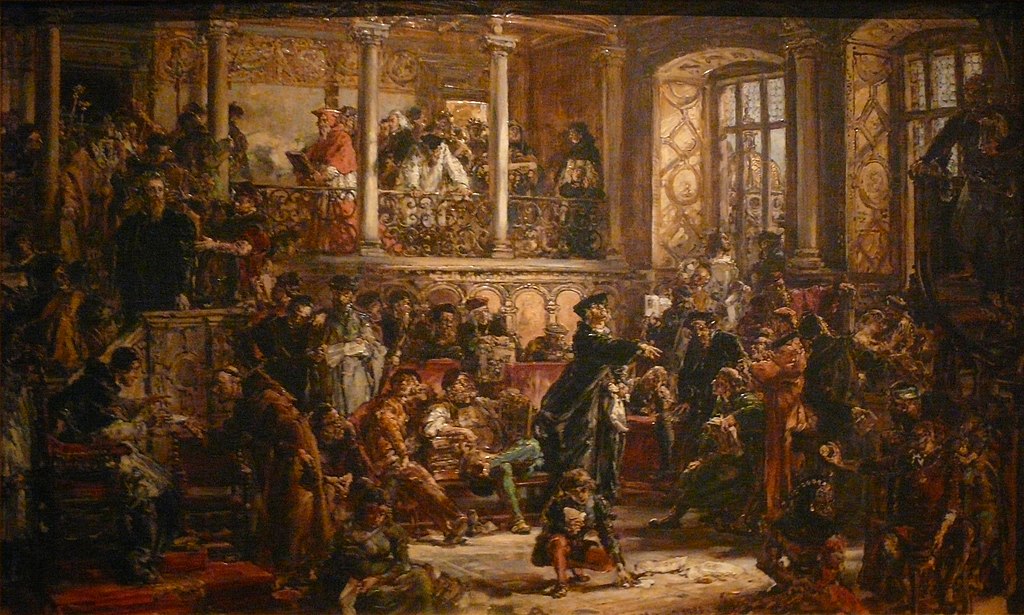The Europe of stakes – this is the term that can be used to describe most of our continent in the 16th and 17th centuries. The Reformation took on many different faces, and the paths leading to what was most important for Europeans at the time, namely salvation, proved to be not only different and sometimes tangled, but even contradictory. As a result, the faithful of churches other than their own were considered heretics, and – what is worse – leading others astray.
by Maciej Forycki
Hence attitudes and behaviour that seem almost impossible for us to understand today (let alone approve of). But if one dreams of understanding rather than judging the past, we must try to understand the inner logic of the inquisitors – both Catholic and Protestant. Faced with the prospect of condemnation, there was value in bringing a fellow apostate back to the right path, and leading them to renounce their errors, even at the cost of violence. People were led to the stake not only by low instincts (as today’s pop culture suggests) – which does not make this behaviour any less horrifying.
There was also a strategy and politics in the background. The religious wars ravaging Western Europe were aimed at limiting heresy, stopping its ‘hotspots’. It was – one could say – theological epidemiology.
The Polish-Lithuanian Commonwealth had the distinction of being a deeply multi-confessional state. This was not just a matter of different Christian denominations: the Polish, Lithuanian, and Ukrainian territories were also inhabited by Jews, Muslims, and Karaites. In addition to the entire range of Reformed denominations (from the Evangelical-Reformed churches to the Antitrinitarians), there were also followers of the Orthodox Church, as well as unifying orientations, trying to ‘sew together’ the Great Schism of the 11th century.
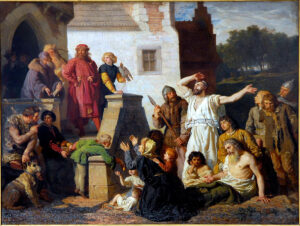
In the circumstances, the choice was in fact obvious: between permanent, state-destroying civil war, and genuine tolerance. The political elites of the 16th-century Commonwealth had enough imagination to opt for the latter – which was not obvious, moreover, unique in modern Europe – and aroused (until then) admiration. The Encyclopaedia by Diderot and d’Alembert expresses this opinion emphatically in a generalising note in its glossary: ‘Poland is the country where the fewest people were burnt for being wrong about dogmas.’ This formula, emphasising the importance of the Polish enclave of tolerance, found expression in the rhetorical figure of a ‘state without the stake’, as historian Janusz Tazbir described Poland years ago.
The Europe of stakes
This peculiarity was particularly clear against the background of Western Europe: a region of stakes and religious wars, which claimed millions of victims. The eastern part of the continent, on the other hand, was a Europe of religious harmony, which was ensured by the local empires: the Polish-Lithuanian Commonwealth and the Ottoman Empire (the exception being the uniformly Orthodox and heresy-free Muscovite State). The differences between these two parts of the continent in terms of religious tolerance were extremely glaring at the time.
In the first half of the 16th century, religious conflicts arose mainly in the countries where the Reformation movement spread most rapidly, namely the German Reich and the Swiss Confederation. In the Holy Roman Empire, these were opened by what is known as the Peasants’ War in Germany (1524–1526), a great social movement inspired by the teachings of Martin Luther, and directed against feudal lords and clerics, who maintained churches and monasteries through serfdom. Thirty years after Luther’s speech, the countries and cities that had converted to Protestantism were already strong enough to rebel against the emperor (Schmalkaldic War, 1546– 1547). Earlier, there had also been a growing religious dispute between the Catholic and Protestant Swiss cantons. The apogee of this conflict was the Battle of Kappel am Albis (1531), during which one of the most famous reformers, Ulrich Zwingli, lost his life.
Meanwhile, the Inquisition dealt bloodily with heretics. In Spain, Portugal, and Italy, Protestants were burnt at the stake, turning these lands into coherent Catholic countries. In the Protestant states, on the other hand, not only Catholics, but above all the radical factions of the Reformation, were treated ruthlessly. The most telling example of this was the sentencing to death of Michael Servetus (1511–1553). In areas where one denomination clearly dominated, religious minorities were eliminated with no mercy. This led to the division of Western Europe into religiously homogeneous Catholic (the Iberian Peninsula, Italy) and Protestant (Scandinavian) countries.
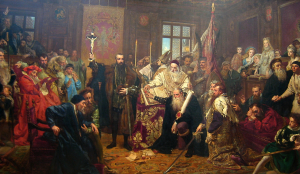
Bloody religious conflicts also raged in the British Isles after Henry VIII severed ties with Rome in 1534. There were local rebellions against Anglicanism imposed by central authorities (for example in Cornwall during what is known as the Prayer Book Rebellion of 1549) and, on a larger and longer scale, supporting the Catholic Stuarts (e.g. the Rising of the North, 1569–1570). The sectarian conflicts associated with England also reached a much wider, international character, leading to the great Anglo-Spanish War (1585–1604), played out on many fronts in north-western Europe (it triggered, for example, the conflict known as the Irish Nine Years’ War).
The second half of the 16th century was also marked in Western Europe by eight consecutive religious wars in France (1562–1598). The bloody struggle between Catholics and Protestants, known as Huguenots, completely ruined the country, and even compromised its very existence, threatening to destroy the ancient system of government dating back to Frankish times. The horror of the Night of Saint Bartholomew, during which Huguenots were slaughtered in Paris, was to long remain one of the clearest examples of Western European faith-related murders.
The countless religious conflicts of the 16th century found their continuation in the bloodiest European struggles of the first half of the 17th century. The Thirty Years’ War (1618–1648), which ravaged and depopulated vast swathes of the continent in the West, must be seen as the climax of religious strife. In some regions of the German Reich, which suffered most from this war, more than half the population lost their lives. This short statement clearly shows the scale of the religious hatred of the time: according to conservative estimates, at least eight million people died in the Thirty Years’ War – Europe had never known such bloody conflicts before, and had to wait until the 20th century for others on such a scale.
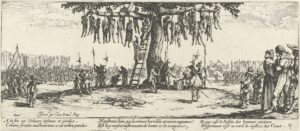
The Europe of religious consensus
At that time, however, Eastern, Slavonic, and Turkish Europe, had a different approach to religious and confessional matters. The nobility-based Polish-Lithuanian Commonwealth stretched from the borders of Protestant-Catholic Germanic Europe in the west, to the Orthodox lands not far from Moscow in the east, and from the Lutheran Baltic Sea basin in the north, to the boundless territories of Orthodox Ukraine, all the way to the Black Sea and the border with the Muslim state of Turkey, which, while conquering more and more lands on the Old Continent, also applied the principle of freedom in matters of faith.
In the Ottoman Empire, ‘dissenters’ were considered theological cousins, ‘people of the Book’, who belonged to one religious family. Despite the fact that the Turkish sultan was, from 1517 onwards, also the religious leader, or caliph, he respected the dissent of the followers of Christianity and Judaism. Consider, for example, that the Orthodox Patriarch of Constantinople sat on the most important body of Turkish power, the divan. Modern Turkey provided protection for non-believers, for which they had to pay a special tax called the haraj.
Another thing is that, separately, there was also a system of tithes in kind, i.e. children were taken from Balkan Christians to be made into Janissaries, who then became the most faithful civil servants. These Christian ‘slaves of the Porte’ reached the highest offices in the Turkish state, hence many viziers in the modern era were of Slavic origin, especially Serbian. Religious tolerance in Turkey had its price, but religious freedom there has stood the test of time. Let us cite here the case of the dynamically developing Jewish community in Thessaloniki, and the religious separateness of the Greek Orthodox community who, owing to tolerance, was able to nurture its own identity for centuries before breaking free from Turkish supremacy in the 19th century, under the banner of its religion, and achieving independence.
In modern times, a small state also existed under Turkish sovereignty – Transylvania; heir to the powerful Kingdom of Hungary. The autonomy guaranteed to this country by the Ottoman Empire made it possible to preserve the old social structures and political system based on the preponderance of the nobility, and the freedoms guaranteed to it. Persecuted in the West, Protestant refugees sought a haven in two friendly states in the East – Poland and Transylvania, where similar political mechanisms guaranteed them freedom of religion.
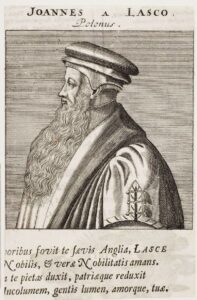
Paradise for dissenters
In the 16th and 17th centuries, the Polish-Lithuanian Commonwealth was the only country in Christian Europe that retained its independence, and applied the principles of tolerance towards followers of other religions and denominations of Christianity. In modern times, it encompassed the multi-faith lands of today’s Poland, Lithuania, Latvia, Estonia, Belarus, and Ukraine. This state of the Polish nobility became home to all faiths of the three European religions. Among them were Jews, who settled on the Polish-Lithuanian territories in the largest numbers in the world, calling their friendly country Paradisus Judeorum: a paradise for Jews.
Religious tolerance in Poland has its roots in the Middle Ages. The role of King Casimir the Great (1333–1370) was highly significant, who, while preserving the Catholic faith as the state religion, legally guaranteed freedom to Orthodox Christians of various rites, and to the Jewish population.
The Reformation movement, which resulted in religious conflicts in Western Europe, was also an event of great significance for the Polish-Lithuanian Commonwealth. Thousands of refugees, persecuted for their faith, migrated across the western border of the state. The destination of Protestant migration was the Duchy of Prussia, the first country to adopt Lutheranism as a state religion. In order to reach it, however, one had to cross Greater Poland and Royal Prussia, which belonged to the Polish-Lithuanian Commonwealth. These lands proved so friendly to dissenters that many of them did not continue their journey, settling within the borders of the Polish state. In towns such as Leszno (more widely known thanks to the descendants of the Leszczyński family who ruled there: Stanisław, King of Poland and Duke of Lorraine, and Marie, Queen of France), the newcomers erected temples: a Jewish synagogue next to the Catholic parish church, Lutheran and Calvinist churches, and a temple for Arians, or anti-Trinitarians.
The incorporation of a growing number of eastern territories into the Polish-Lithuanian Commonwealth also strengthened its multi-faith character. Applying the principles of religious tolerance, and wishing to more strongly link the Orthodox population with the nobility-based Commonwealth, which remained Catholic as a state, the Union of Brest was concluded in 1596, uniting the Orthodox with the Catholic Church: the Uniates, the hierarchs of the Orthodox Church, and its followers, recognised the supremacy of the Pope and Catholic dogmas, but retained the Byzantine liturgical rite.

Religious tolerance in the Polish-Lithuanian Commonwealth was not based solely on the tradition of respect for otherness, or privileges issued by the King. It was also – or even primarily – guaranteed by law. Resolutions adopted by the supreme political body in the state – the Sejm of the Commonwealth, composed of the King and representatives of the nobility and clergy, and, in the late 18th century, also of the bourgeoisie – guaranteed the maintenance of religious peace in the country. In 1573, during the interregnum, the Polish-Lithuanian nobility decided to conclude a single act, which was to be sworn to by successive elective kings. The content of the Warsaw Confederation is very telling in this respect in its most important passage: ‘[…] And since there is considerable diversity in the Christian matter in our Commonwealth, striving thus so that, for this reason, no harmful rebellion should arise among people, which we see in other kingdoms, we promise ourselves jointly […] that we, who are different in faith, shall preserve peace among ourselves, and not shed blood for the sake of different faiths and varieties in the church […].’ In 1791, in a constitutional act – which was avant-garde compared to other European countries – known as the Constitution of 3 May, Catholicism was recognised as the dominant religion, but the inhabitants of the Polish-Lithuanian state were guaranteed complete freedom of faith.
The case of the Polish-Lithuanian Commonwealth shows that, in modern Europe, multi-ethnicity and religious diversity did not necessarily lead to conflict. On the contrary – the specific system of governance was conducive to conciliatory solutions and the establishment of tolerance in the state sphere, which was impossible in the 16th and 17th centuries in centralised Western European monarchies.
Author: Maciej Forycki
Translation: Alicja Rose & Jessica Sirotin

